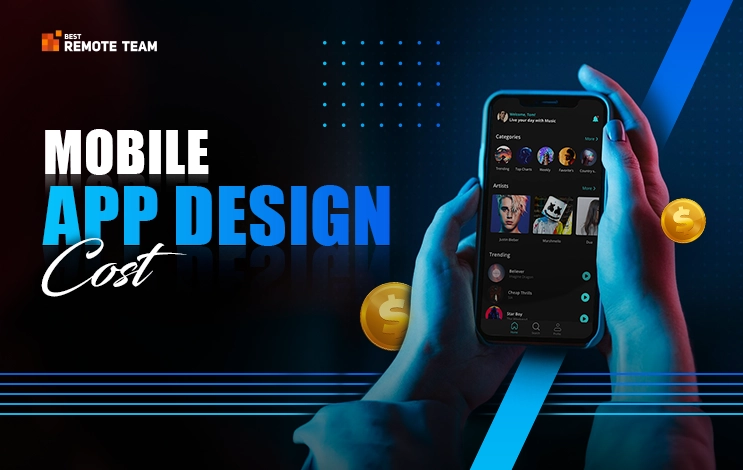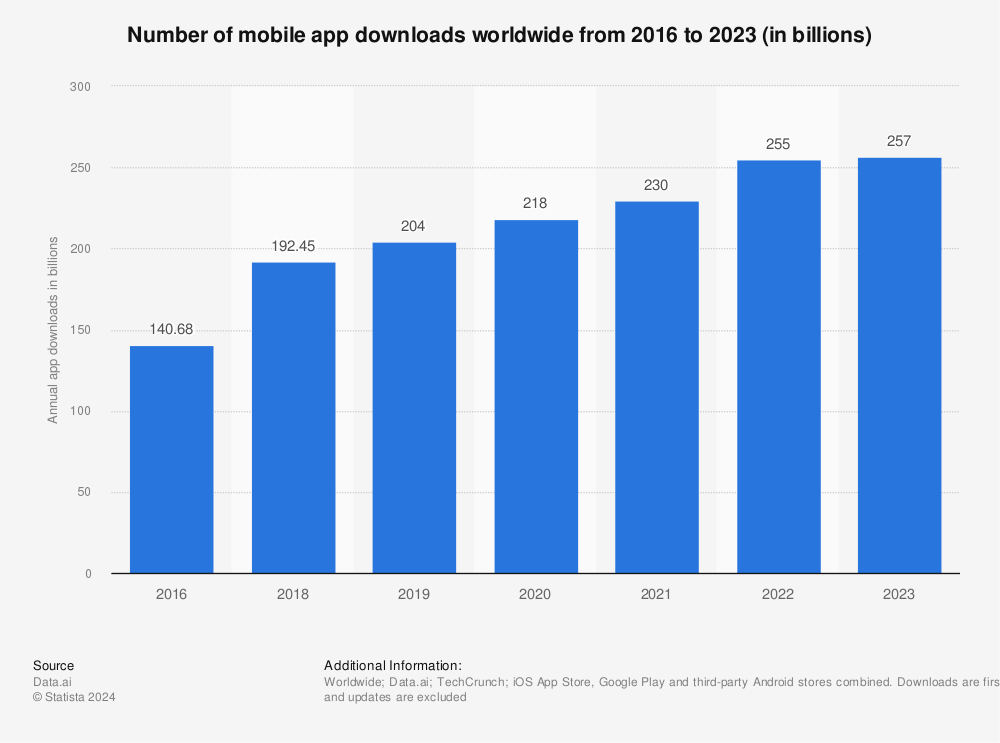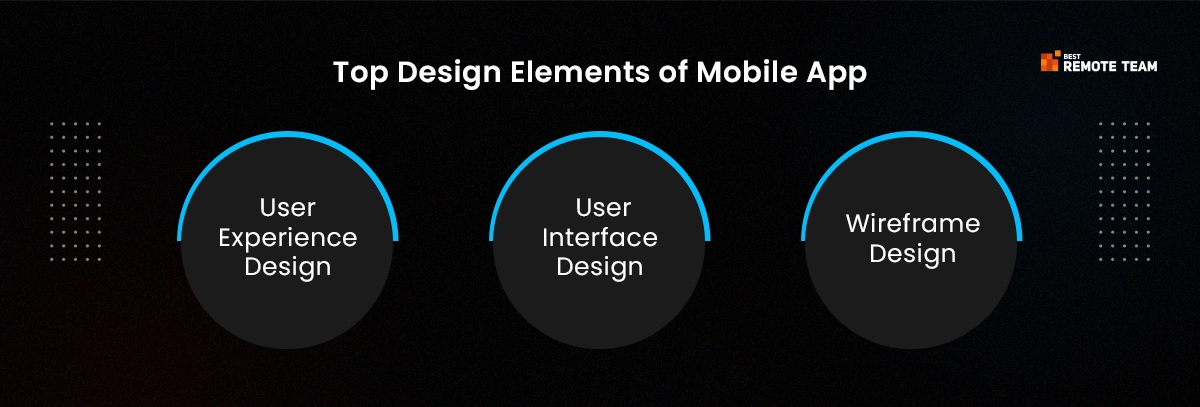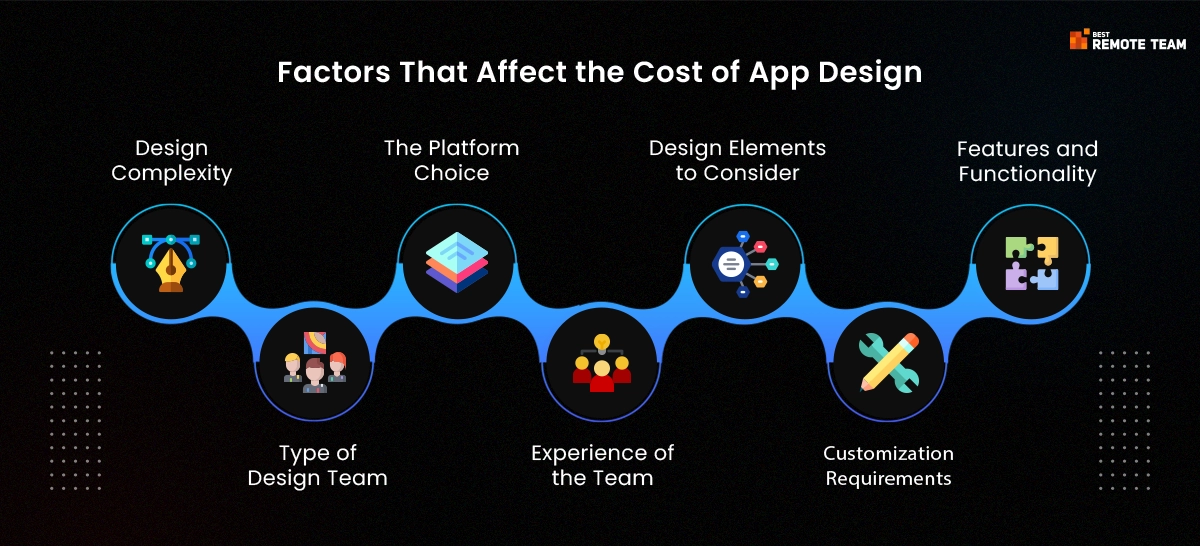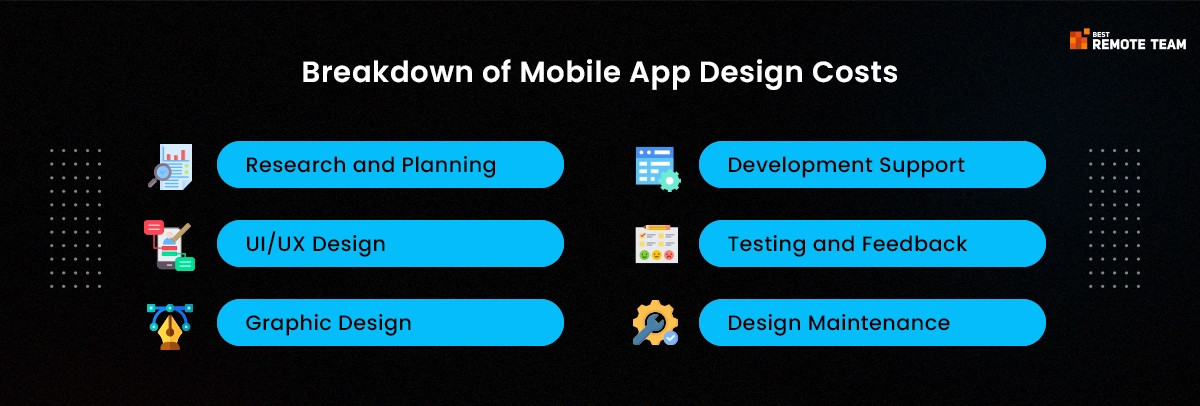Why You Must Budget Mobile App Design?
While mobile app design is defined in the budget, it may not be done extensively. However, it is important from a strategic perspective. With a proper budget and resource allocation, you would be able to design a well-planned mobile application.
You would know how many resources you must allocate for each design phase.
Benefits of Budgeting Mobile App Design
Let’s look at some of the key benefits of mobile app design that will help you understand its importance.
#1) Improves the User Experience
When you create a budget for the app design, you will allocate significant resources for user experience design. These resources would conduct the requisite research, define the personas and enable usability testing.
Eventually, they will be able to deliver the design and experience your user needs, thus ensuring high engagement.
#2) Improved Resource Allocation
When you are aware of the budget allocated for design, you can prioritize the design elements better. You would know which features to release in the first phase of development.
This clear budget would help you avoid overspending on unnecessary aesthetics or design features. Moreover, you would be able to create an effective design process.
#3) Boosts User Interface Design
The user interface should be functional and aesthetic. However, you would not be able to determine the skills of your developers or the kind of expertise you need without the budget.
The budget can help you plan your resources, make the design effective and ensure a usable app at the end of the journey.
#4) Enhances Cost Management
When your budget is defined, you will know the contingency amount with you. This is extremely important for startups and small businesses. You will be able to use the limited resources efficiently and reduce the budget overruns.
Design Elements to Budget
You must understand each element within the mobile app design, and allocate a specific fund for them. Let’s take a look at each of these elements.
#1) User Experience Design
An app developer or owner must allocate sufficient funds to this stage. In this part of the design planning, the designers will conduct market research and take surveys to understand how the user uses the app. They will also take notes of the type of apps the user likes.
The UX designers would then create wireframes and prototypes to check for usability and interest in the application. There should be a good investment in a user experience designer (skills + experience). Moreover, you should allocate funds for the tools/infrastructure (if needed).
#2) User Interface Design
The visual design is a crucial part of the mobile app design process. The colours, layouts, typography and even the icons used to play a pivotal role in engaging the users.
You must invest in a good designer, who is responsible for mockups, interaction design and animation. You can either invest in them separately or choose one designer for all.
The budget allocation is crucial as it would make the design accessible and efficient.
#3) Wireframe Design
Once the initial concepts are ready for the mobile app design, the designer will work on creating the layout. They would want to define how these elements would look in the app design.
That’s why wireframing is crucial for the app’s success. You must invest in this phase as well. you can have designers with sketching or wireframing experience to help you.
7 Key Factors Affecting Mobile App Design Cost
A mobile app design cost is not defined by the skills of the designer alone. You cannot even design based on the design plan or interactions you need.
Several factors combine to help you realize the mobile app design cost.
#1) Design Complexity
You may want a very simple and efficient application or a large/complex application. The complexity of the application can lead to design complexities as well. There would be several layers within a single design in case of a complex application. This can impact the app cost.
1) Simple Applications
If you are planning a simple application, you are designing basic features and minimal interaction. There would be minimal screens or features, which makes it easier to design and build. As a result, you would use limited resources and less time. This would be less expensive.
2) Moderate Complexity App
In a moderate complexity application, you need to add more interactive and feature-rich functionalities. For instance, you need to introduce proper data storage methods, integrate social media functions and introduce in-app purchases. You may even need to create specific profiles.
This may require a mobile app design wireframe, prototype and usability tests. You must invest more resources and time compared to simple app design. As a result, the cost may go up.
3) Highly Complex Apps
These are sophisticated applications with advanced features. For instance, you may need to add real-time sync, role-based access and database management to your app design.
These apps may require complex design composition, such as custom graphics and animations. The design requirements would include more than wireframing. You may need to design the high-fidelity wireframes. This is why designing highly complex apps is expensive.
| Complexity | Approximate cost |
| Simple App | $3,000 to $10,000* |
| Medium complexity app | $10,000 to $20,000* |
| Complex app | $20,000 to $30,000+ |
#2) The Platform Choice
It is crucial to make the right platform choices when planning the mobile app design cost.
1) iOS
When you design for the Apple platform, you must adhere to the defined guidelines and standards. This means you must prioritize simplicity and clarity.
You must even optimize for the different screens and devices. Your iOS app must follow the Human Interface Guidelines as well to enhance the user experience. As a result, you must include navigation patterns and touch-based interactions.
This can lead to increased costs of iOS app development. It is especially true, if you must develop multiple versions of an app for different devices.
2) Android
Android is a fragmented operating system. You must design the same screen for varying sizes, resolutions and hardware capabilities.
The android app designer must adhere to the Google Material Design guidelines and create bold and functional designs. You must ensure the designs are visually appealing and intuitive. At the same time, you must ensure compatibility with the numerous designs.
All these factors can together impact the choice of your platform and the design cost.
3) Cross-platform
There is the third choice of going cross-platform with your design choice. You can use a single codebase and in some cases the interface to design your application across devices. The uniform approach and open-source nature of most frameworks allow you to dictate the cost of mobile app design.
| Platform | Approximate cost |
| iOS | $3,000 to $7000* |
| Android | $3,500 to $9000* |
| Cross-platform | $5000 to $10000* |
#3) Design Elements to Consider
When designing, you must consider the elements as well that need to be designed. This would also influence the cost.
1) User Interface
As it involves the visual elements of the application, you must incorporate interactive buttons and unique typography. This is crucial to increase the user engagement. these elements may cost more if you are planning a complex or large application.
2) User Experience
The UX design is responsible for creating the interactions, defining the usability and planning the accessibility. This element will ensure that the app meets the user’s requirements perfectly.
Investing in good UX design can lead to better retention and increased satisfaction.
3) Graphic Design
You can use the graphic design to create custom buttons and illustrations that suit your design needs. this will make the app appealing and distinctive.
You must use high-quality graphics to create memorable user experiences. Pay attention to the details to ensure the best results.
#4) Features and Functionality
The total features and their type can also decide the cost of designing an application.
1) Basic Features
If you are planning a simple navigation with standard content in the app, you may not be investing a lot. The basic functionality can be designed in a few weeks to a month. This may take up fewer resources and time.
2) Advanced Features
If you are planning real-time or AI features within the application, it may extend the design needs. You must invest in resources that can easily implement these features. You may need to give the users their share of time as well.
This is why you may need to allocate more when planning an app design with advanced features.
#5) Type of Design Team
The design team you are hiring may also influence the cost of mobile app design.
1) Freelancer
Freelancers work independently, on project-basis. They tend to provide a lot of flexibility to the project. As a designer, they would prove to be cost-effective, as you would be working with a single resource.
Additionally, they are capable of handling multiple things at a time, which makes them an effective resource. However, their availability and reliability can be a cause of concern. If you don’t have a skilled resource, you may face issues getting the job done.
2) Design Agency
Design agencies are structured and have a defined process. They have in-house experts who can help with the skills, and features needed. They can offer several services simultaneously.
Owing to their structure, they can handle complex tasks. They have the requisite expertise that can help them design with great consistency. However, they may not be flexible and might cost more.
| Team type | Approximate cost |
| Freelancers | $15 – $25* per hour |
| Design Agency | $40 – $250* per hour |
#6) Experience of the Team
The team’s experience is pivotal in judging the cost of the design. You will notice that highly skilled resources might cost more.
1) Senior Level Resource
The senior resources will have an in-depth understanding and deep-rooted knowledge of the design principles. They will have extensive portfolios and a proven track record, which can help you decide their ability.
Moreover, their experience can help you access the best insights and creativity, required for the project completion.
2) Mid-level Resource
They come with moderate experience and may have spent a few years in the industry. They offer a specific balance in terms of cost and expertise. They can offer competent designs and help resolve complexities in the project.
3) Junior-level Resource
They have limited experience and lack in-depth skills. However, they may be able to offer simple solutions and can attend to basic projects.
| Region | Senior Level | Mid-Level | Junior Level |
| USA | $120 – $180+/hr | $80 – $120/hr | $60 – $75/hr |
| Australia | $90 – $100+/hr | $75 – $90/hr | $60 – $75/hr |
| UK | $75 – $99+/hr | $50 – $70/hr | $25 – $50/hr |
| Europe | $75 – $80+/hr | $55 – $65/hr | $40 – $50/hr |
#7 Customization Requirements
when you are planning a mobile app design, you must also ensure it is customized to meet your unique requirements.
1) Off-the-shelf vs Custom Solution
When you choose off-the-shelf design, you are working with pre-built templates and design elements. This can reduce the costs. However, you may not be able to design the experience your user needs.
Custom design may be slightly expensive and time-consuming. However, they will offer the tailored user experience that your user demands.
2) Branding Needs
The mobile app design should be in tune with your brand’s components. You must include the colour schemes, logos, layout and style that is consistent with your brand’s requirements.
By customizing the application, you will include the branding guidelines to improve retention and loyalty.
How Much Does Mobile App Design Cost?
There are several design stages you must consider when planning the mobile app design. The cost breakdown at each stage will help you ensure you have defined a proper budget. It can enable a successful delivery.
You must include the expenses for user research, wireframe design and development. You must ensure you have the skilled resources and infrastructure to design the application.
In this section, we will understand these costs that need to be allocated for the perfect outcome.
#1) Research and Planning
This is a crucial part of mobile app design. You must allocate the budget well to meet the design requirements.
1) Market Research
This is the first part of the research, which involves analysing the market, competition and current trends. You will build the user preferences and behaviours using this data. It will help you guide in designing the app interface and interactions.
The cost will include detailed surveys, data analysis and market trend understanding.
2) User Persona
The user persona creation involves detailed profile development. You will be creating personas based on their goals and pain points.
The cost will include the data analysis, insight development and focused interviews. The insights from the data will be used in guiding the design decisions.
3) Wireframing and Prototype Development
The wireframe design is key to understanding the structure and functionality of the application. It will also help create the user journey.
The cost involves creating prototypes and designing wireframes. You may need to invest in user feedback and design changes as well.
#2) UI/UX Design
This is an integral part of the design process. It can help you plan for the experience and ensure functional interface designs.
1) Design Exploration
This is the first part of the UI/UX design. This involves the conceptualization of the visual elements. You will be planning the design roadmap and concepts that can help users accomplish their goals.
Various stakeholders would sit together to brainstorm and create mood boards. This is the time when the teams would sit to define the style guides.
The cost would include the resources allocated and the man-hours involved in completing the task.
2) Mockups and Prototypes
You must create mockups to translate the vision into an actual product concept. This is also used to test the functionality and usability of the planned design.
The mockups are a static representation of the interface design. Prototypes, on the other hand, are interactive models that will simulate the interactions.
You will need to invest in high-fidelity mockups and prototypes for each component and interaction. You might need front-end designer and graphic designer with the requisite skills. This can add to your cost of design.
3) Iterative Process
When you are designing the user interface, you must continuously improve the design to meet new user goals. You can use the iterative process to enhance usability and accessibility.
Iterative design includes usability testing and multiple revisions. This would help you release an app that meets the expectations.
#3) Graphic Design
There are multiple facets to graphic design you must consider to release the software solution.
1) Icon Design
The icons are a crucial part of the design process. You must create intuitive and interpretable symbols for the application. It should be appealing and in sync with the brand.
The cost of the icon depends on the complexity and total number of icons needed for the app.
2) Illustrations and Animations
The visual appeal and interaction ability depend on the illustrations and the animations. You can use onboarding screens and storytelling to complete them. You can also use feedback and expectations to guide the users and lead to natural interactions.
#4) Development Support
The development support offered during the design stage is also an equally crucial part of mobile app design process. Here is how this aspect will influence the overall cost.
1) Design Documentation
It is crucial to work on extensive design documentation that can help the developers code the interactions and implement the design properly. You must add the design guidelines, specifications and design principles for consistency.
This can add to the overall costs, as you need resources and time to create the document of UI patterns and guidelines. Moreover, these costs depend on the complexity and app scope.
2) Collaboration Tools
You must use these tools to foster effective communication. It also helps with workflow management that improves collaboration between the designers, developers and other stakeholders.
You might need to invest in the right collaboration tools that can help you manage version control and ensure smooth communication.
#5) Testing and Feedback
Testing the design ensures you can evaluate its accessibility and usability. It also helps ensure you have identified the potential issues.
1) Usability Testing
This is an important part of testing the design. You will check the interface to understand if it is usable. As part of the experience design, you must look for confusion and friction in the usage. Identify the points that can help you improve the application.
The cost of the usability testing will depend on the total testing sessions and the time taken to analyse the results. The total number of participants will also dictate the total cost.
2) Implementing Feedback
The design team must value the user feedback and implement them in the app development. Your team should pay attention to the feedback-sharing issues and friction.
You might need to incorporate multiple iterations and revise the design to meet the feedback requirements. this might take up man-hours of your resources.
#6) Design Maintenance
As a product owner, you must invest in design maintenance. It will elp increase the longevity and relevance of the design.
1) Updates and Revisions
You can use the user feedback, current trends and other inputs to update or revise the design. You must also adapt your design to the new technology requirements and user expectations.
The cost will depend on the total updates or revisions you have made. In case you have updated the visuals to increase aesthetics, you may need to pay more.
2) Maintaining the System Design
This process involves maintaining the design system and updating the UI components. You must also implement the style guides and design patterns across the system.
You will need to calculate the costs involved in updating the component libraries and style guides. It is equally crucial to consider the documentation cost for maintenance of the app design.
People also read: How Much Does Website Development Cost in India?
Cost-Effective Strategies for Mobile App Design
After considering all the factors influencing the mobile app design cost, you might experience an increase in the budget. However, there are ways in which you can optimize the design cost.
#1) Prioritize the Features
The first step is to create a minimum viable product (MVP) for the application. You will be able to prioritize the core features and functionality for the users. Using the MVP approach, you can reduce the initial design and development costs with iterative design.
Moreover, you can use the feature roadmap to ensure user-defined feature implementation. This would allow you to create the application in sync with the user’s needs and end business goals.
#2) Use Design Frameworks
You can use design frameworks and libraries that encourage the use of pre-built templates and codes. This would help you implement the pre-defined styles and components. It can reduce design time and use of resources.
You can also reduce costs by creating a proper design system. You can add reusable components and patterns. Using the process, you can reduce the effort needed to maintain and update the design.
#3) Implement Agile Methodology
You must implement the agile development framework that can help incorporate continuous iterative development. You can improve the design using the feedback from users. This iterative approach can mitigate rework risks and ensure user-centric designs.
Implement a cross-functional team of designers, developers and product managers who can reduce communication issues and accelerate the design process.
#4) Select Engagement Model
You must consider the engagement models while planning the mobile app design. You can either choose to go with freelancers or hire dedicated designers for the purpose. Using the outsourcing model, you can reduce the overheads for the business.
An in-house team gives you complete control of the design and ensures it is aligned with your vision. It is possible to iterate quickly with an in-house team.
You can outsource to a mobile app design company to save costs and reduce operational overheads.
#5) Continuous Improvement
You can implement the continuous feedback loop for usability testing and user feedback. This would help you identify the improvements you must plan for the application.
At the same time, you must implement a data-driven model to determine the user’s behaviour and determine the design areas to optimize. Your decisions will be backed by insights available via real-time interactions and usage preferences.
These points can help you optimize the costs via strategic planning, efficient resource allocation and value-driven design processes. You can use agile methodology, design frameworks and outsourcing options to drive more value.
Conclusion
Mobile app design cost is an important aspect to plan when defining the budget and roadmap for mobile application development. You must plan for the UI/UX design, development support and continuous design improvement.
The different factors influencing the design cost include the development support offered, UI/UX design, app complexity and others. you can optimize the cost by choosing the agile methodology, implementing frameworks and getting outsourcing support.
Best Remote Team can help you build the right team to extend your vision into a capable mobile app design. With affordable design costs and a fully structured process, our designers and developers can help build a user-centric design.
If you want to hire a mobile app designer or build a remote team, connect with our team.


